On-demand webinar: The Partner Marketing Funnel: Introducing the 4 Why's
Partner marketing isn’t just about generating leads. It’s about moving opportunities through the funnel with clarity and purpose. Yet for many...
14 min read
 Thomas Harrison
Jun 26, 2025 5:28:03 PM
Thomas Harrison
Jun 26, 2025 5:28:03 PM
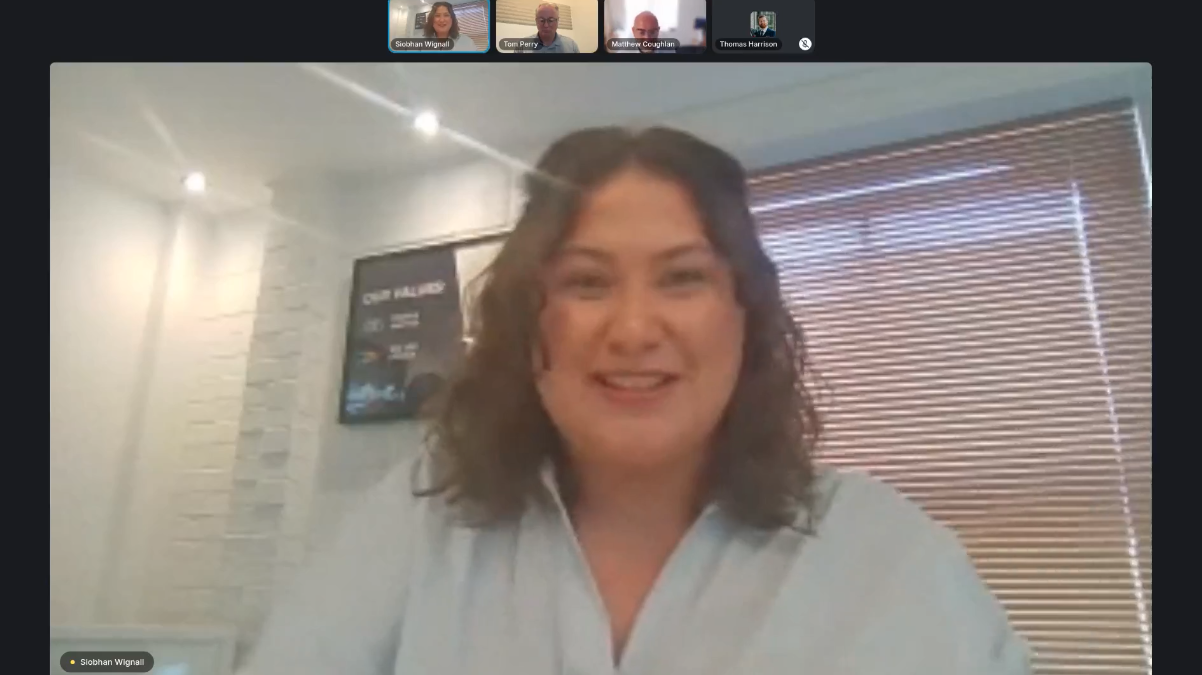
Recruit Smarter. Find Partners That Perform.
Recruitment is one of the toughest challenges in partner marketing, everyone wants more, but finding the right Partners is what really moves the needle. This webinar breaks down what makes a recruitment strategy actually work and what to avoid if you want real results.
Watch the on-demand webinar to hear how leading vendors are reshaping recruitment strategies, prioritising performance over volume, and applying practical tools (like EdisonAI) to make faster, smarter decisions.
A big thank you to our speakers for sharing their insights:
Tom (00:00 – 02:35)
My name is Tom Perry. I’m the Founder and CEO of Sherpa. You’re joining us today for a webinar in our Smarter Partnerships series, and today we’re focusing on partner recruitment. Our title is "Why partner recruitment is harder than it looks," and we hope to give you some practical pointers and takeaways to ease that journey.
We’re going to run for about 30 minutes. Just a bit of housekeeping: please ask questions in the chat at any time. We are recording this session, and we will certainly send out the transcript, the recording, the slide deck, and a summary of the key points we discussed with our panelists today.
It might be best to focus on listening rather than writing, but that’s totally up to you. We’ll make sure you have all the information afterward. Thank you very much for joining us — we know your time is incredibly valuable, and we really appreciate you making the time to be here.
Just to set the scene before I introduce our two experts: Over the past three years, Sherpa has been asked to do more recruitment than in the previous ten years combined. I think there are a couple of reasons for that. First, there was a lot of introspection during lockdown and the period after it, when technology vendors were re-evaluating whether they had the right channel, the right mix of partners, and the right number of partners to meet their growth goals as the world returned to normal.
This led many to realize that they didn’t — and to come to a company like Sherpa for support with recruitment campaigns and activities. We’ve run a lot of this work over the past three years. Vendors do want more partners, but today we’re going to dig into how to find the right partners and how the preparation and pre-work can inform that.
We’ll also talk about strategic fit rather than just volume, about the partner value proposition, and about enablement. At the end, we’ll share a few stats from our benchmark report, which we run every six months and which is powered by our Edison AI platform.
Without further ado, let me introduce Siobhan Wignall from Sherpa and Matthew Coghlan, who joins us from SpectraCloud today. I’ll ask them to introduce themselves.
Siobhan (02:35 – 03:00)
Thanks, Tom. I'm a Project Manager here at Sherpa, and I primarily look after our recruitment product. Having seen it from both an agency side and a vendor side, I hope I can offer some helpful tips today.
Tom (03:00 – 03:16)
Good stuff. Thank you very much, Shiv. It’s great to have you here. Siobhan is our most active practitioner on recruitment, and I’m hoping some of the secrets of how to do recruitment well will come out today.
Matthew (03:16 – 04:17)
Thanks so much, Tom, for inviting me. My name is Matthew Coghlan. I'm currently the Partner Development Manager at SpectraCloud. I’ve been working in partnerships for about 14 to 15 years.
I started with Atlassian, which was a really interesting go-to-market experience. Then I moved to GitLab, which was an open-source product that gained a lot of traction with partners — same kind of story, different challenges, but all of that has shaped the experience I bring today at SpectraCloud.
It’s really my bread and butter. I've been doing this for a long time, and it’s nice to be able to share some of those experiences and perspectives today.
Tom (04:17 – 04:49)
Thank you very much, Matthew. You’re kind of the perfect guest for us — experience with big companies and smaller organizations as well. We look forward to hearing more.
So let’s get into it, if we may.
I want to start with what some of the challenges are around partner recruitment. You’re both at the sharp end of several campaigns for our clients. What are the challenges you're seeing for vendors when it comes to recruitment?
Siobhan (04:49 – 05:35)
From my perspective, we see vendors come to us and say they don’t know why they aren’t able to make it work, or that certain issues keep recurring.
A common underlying trend is a real misalignment between marketing and sales. There’s a need for new partners, but how do you actually attract the right type and get that field feedback on what messaging is resonating?
Getting the right market message — about why partners should work with you — is really challenging when there's that misalignment, and it can result in an unmanaged or ineffective pipeline across the board.
Tom (05:35 – 05:49)
Good stuff. We’ll certainly get into alignment more, but you also touched on the partner value proposition and getting the story right upfront.
Matthew, what have you seen — both in previous roles and your current one at SpectraCloud?
Matthew (05:49 – 07:11)
I think the first challenge is that, as with many things in IT, you're only as good as your last project. I find that I have to constantly challenge myself and reinvent partner strategies, because what worked a couple of years ago doesn’t necessarily work today.
It’s a fast-moving environment.
Another key challenge is the board-level recognition of the value of successful vendors and channels. Leadership often sees the potential for accelerated revenue and quicker market adoption — so there's always this big appetite: “We need a channel, and we need it to be productive really quickly.”
But between that excitement and actually making it work, there’s often a lack of appreciation for the stages required. You have to start with recruitment and make sure your proposition is attractive to both customers and partners.
Many companies want to skip those stages and rush through, but it takes time and diligence to look at things from the partner and customer perspectives — and to refresh that consistently, because each vendor product and customer set is different.
That ongoing interpretation is always the challenge, but it also keeps the job interesting, and why I’ve stayed in this space for so long.
Tom (07:11 – 08:13)
Absolutely. You’ve both touched on the importance of getting the story right at the outset.
When we work with clients embarking on recruitment, it’s like sharpening the axe before cutting down the tree — the pre-work is critical.
I think that JVP (Joint Value Proposition) work is very important, but also mapping out the stages of recruitment, because it is very different from traditional demand generation.
You’re asking a well-established business to take on another product on its line card. That is a big decision, and having everything in place is really important.
It’s interesting you mentioned the C-suite recognition of the need for partnering and probably the need to recruit more. But do you think there’s a challenge in getting that message upstairs, Matthew?
Matthew (08:13 – 09:20)
Yeah, there definitely is. It goes back to the idea that what has worked before can’t just be instantly replicated without interpretation — and it can’t.
Also, it’s an organizational challenge: how do you introduce a channel go-to-market alongside a direct sales motion? You need checks and balances and openness between both sides of the business.
To get things moving, it’s crucial to ensure that anything coming through the channel contributes to the broader sales force and makes them excited and successful.
The channel shouldn’t be in isolation — it should provide new leads and access to new customers that benefit the whole organization.
That’s something that the CRO and the C-suite need to appreciate and help influence to get going.
Tom (09:20 – 09:50)
Yeah, absolutely.
One of the jobs we sometimes do at Sherpa is forming that internal buying committee to convince stakeholders on budgets and timelines.
Siobhan, maybe I can come back to you because I know you do a lot of work around targeting for recruitment. Could you share a couple of pointers on the work that happens before a campaign even starts?
Siobhan (09:50 – 11:20)
Yeah, absolutely.
I quite often find that people know the challenge they’re facing — they know they might have a revenue gap or a skills gap that they want to fill in their ecosystem — but they don’t quite know how to fill that gap.
Some of it is not knowing exactly what you want: is it ISVs? Is it MSPs? And I think those lines are blurring now. Partners don’t always sit neatly in boxes or self-identify as one specific type.
So part of the work is breaking down what you need and what those characteristics look like, so you can build a message that resonates. It needs to be driven by a lot of rationale and logic.
There are definitely a few steps to this. It’s about taking it back to basics and working out what is going to deliver that missing piece that you’re looking for.
Tom (11:20 – 12:35)
Yeah, absolutely.
The analysis we’ll talk about toward the end of this — looking at potential partner lists, the target account list, and the characteristics within — all play a part there.
It’s a great point about the blurring of lines between partner types. As you say, they don’t all fit into neat buckets anymore.
We now work with much more sophistication around data than we did four or five years ago. Even two or three years ago, you might have just searched LinkedIn and done some basic research. Now, those avenues have changed, and the data challenge is perennial when you’re trying to do partner recruitment. But there are ways to do that, targeting effectively.
Siobhan, just coming back to you — you mentioned sales and marketing alignment. Partner recruitment often starts as a marketing activity, but ultimately, the new partner prospect goes to sales. What’s happening there from what you’ve seen in campaigns?
Siobhan (12:35 – 14:05)
Well, what I’m quite often seeing is that there’s a level of collaboration coming in, which is great to see.
Traditionally, it has often been sales saying, “I need this, and this is how I want to approach it,” and then marketing being asked to fill in the gaps and drive it forward. But really, it does need to be much more coordinated.
Yes, sales need to sit at the forefront when any leads are generated and when prospects start coming through the funnel. Sales really need to take that front seat to progress those leads.
But you can’t just go in heavy with recruitment messaging all the time. You need to understand the nuance of recruitment. You’re asking a business to change its model or add to their portfolio, and that can bring a lot of challenges as well.
So, it’s about appreciating that nuance. That’s where marketing messaging and content really come into play — it should clearly communicate what we call the 3 P’s: your product, your partner program, and your proposition.
Ultimately, it’s all about what’s in it for the partner. That’s a skill set that marketing often understands well, but it needs to be informed by field insights from sales.
Tom (14:05 – 14:41)
No, that’s a great point. I love the 3 P’s analogy. There are lots of P’s in marketing, but that’s the key framework for partner recruitment.
Matthew, coming back to you, you’ve worked in large organizations where you were recruiting partners. Have you seen this kind of misalignment?
How did you overcome it in those bigger organizations? I imagine in your current role, it might be easier due to the smaller size, but what did it look like in the past?
Matthew (14:41 – 15:58)
Yeah, good question.
Sales are always keen to bring in the new thing, using the assets and the model they have with that particular product. Partners, however, are often moving at a different speed and have spent years building up trust with their customer base.
It’s about trying to transfer that trust and give partners the confidence to deliver those new stories and propositions to their customers.
The challenge is getting those two speeds — internal sales and partner readiness — to work together in sync to achieve the desired outcome.
Tom (15:58 – 16:53)
Yeah, that’s a fantastic point about trust.
I was at two Informa Tech Target events this week. One had a big group of direct marketing professionals in tech, and there was a lot of talk about trust in the AI environment.
There’s this idea of human-powered marketing that uses AI but keeps humans at the center because we still need to build trust.
That’s a really good point when it comes to partner recruitment. When you’re asking a business to make such a big decision, you have to build trust through the recruitment process and enablement.
Maybe let’s move on to enablement because that’s always a key check and balance we do before even starting.
Are you going to be able to enable partners if we bring them to the table?
Matthew, I’ve seen heavily incentivized enablement in my background. Do you still need to do that today? Have you made a strong enough business case, or do you need to really incentivize and support those first six months?
Matthew (17:12 – 17:35)
Yes. That initial time is crucial because you can ride on that wave of enthusiasm. It’s new, it adds to the partner’s portfolio, and it gives them something distinctive in the market.
But they need to quickly move on from that and make sure they have the capability to follow through and deliver.
Matthew (17:35 – 19:00)
There’s nothing worse than trying to launch with a partner who looks ideal, and there's great promise, but it falls flat because they don’t have the capability or support to follow through.
Then you end up going through what I call the “valley of despair” before hopefully coming out the other side.
To mitigate that, it’s best to be as open as possible with opportunities and prospects, creating a “give to get” model. There’s nothing like having a set of warm prospects to work on early that makes the relationship meaningful.
From the partner’s perspective, there’s always an opportunity cost. They don’t have spare people just waiting around to learn about new vendors, even if the product is excellent. You really have to give them something concrete and valuable to work on from the start.
Nothing accelerates trust more than ring-fencing some opportunities to work on together — doing real teamwork with your sales and pre-sales teams so that transfer of skills and confidence really happens.
That’s what ultimately generates the energy that helps the partnership take off.
Tom (19:00 – 20:38)
That’s a fantastic point about joint opportunities as part of the enablement stack.
Yes, you can offer an enhanced discount on the first few deals, free training, or other incentives. But actually, shoulder-to-shoulder opportunity management and delivery are critical.
We ran a big workshop last week in Seattle with a client, and it was really key at their stage of growth. Their partner recruitment function needed to work closely with the direct marketing function.
Bringing those two together to create a symbiotic relationship was essential. Field marketing and direct sales are creating opportunities, so let’s attach the partner as early as we can. Let’s not just pay lip service to being “partner first” but prove it with actions.
In the enablement journey, you prove it by standing shoulder to shoulder.
There’s a lot of discussion now about commercial stacks, how you incentivize multiple partners in a deal, and all the steps on that journey. But nothing beats working directly together on opportunities.
That requires a high level of coordination.
Siobhan, what’s your thinking on that?
Siobhan (20:38 – 21:44)
Yeah, I completely agree. If we’re talking about how to have a successful partnership, it all starts with that foundation.
You’ve gone through all this work to find the right type of partner. As you said, Matthew, they can seem like an ideal fit. But many vendors end up with dormant partners — partners who looked promising but don’t end up delivering.
No one wants to get to that place again, where you’ve missed an opportunity with someone who had high potential.
So, how do we avoid that? Strong enablement is the answer.
Is there a quicker way to walk a partner through the learning curve? Going into a deal together — doing enablement in real-time, approaching opportunities together — is the fastest way to make it happen.
It means it’s a hands-on experience, and as they start realizing revenue, they also feel the excitement. This stops partners from dropping off and helps them see the value much earlier.
Matthew (21:44 – 22:35)
Yeah, just to add on that — I always try to identify an early champion within the partner organization.
It’s a personal business at the end of the day. If you can find that individual who sees it as a good move for their career, they become your internal advocate.
They can then spread the knowledge and enthusiasm within their own organization, showing others how it’s done.
It makes them look good, and it sets a strong foundation for a successful, scalable partnership.
Tom (22:35 – 25:51)
Yeah, that’s a great point. Shiv, I know you’re always looking for that champion in those first kickoff workshops — scanning the room to see, “Who’s my person in here? Who’s going to make this thing work?”
That’s just one of the tactics you can use, and it really does become apparent. Your champion or “captain” will usually reveal themselves quite early in the setup. Those workshops are so important for getting under the skin of everything.
Just with a few minutes to go, I’d like to bring in some of the work we do on the Edison AI platform regarding partner recruitment.
The platform allows us to examine a target list that the vendor client provides and say, “Here’s the ideal partner profile. We’ve done the joint value proposition work. These are the companies we want to target.”
The next step isn’t just to start. The next step is to analyze that group of partners because we’re looking for three or four key characteristics:
First, we look at their setup, their skills, their marketing capability, their alignment with other vendors, and also the teams we might be interacting with. That analysis really helps us prioritize which partners to bring into the channel first.
When you prioritize partners who align, are in the right verticals, and have the right setup for your program, you create a much higher likelihood of getting that new partner to the start line and through the enablement process.
We analyze about 20,000 partners a quarter in the Edison backend. We look at all sorts of data points. Some strong insights come out, for example, big regional differences. We might do white space analysis and say, “Okay, you want to grow in Southeast Asia? Let’s see who’s there, what gaps exist, and then augment your list with new data.”
The platform allows us to visualize where partners sit on a skills and propensity-for-revenue matrix, which is really important.
Ultimately, it’s about arming account managers and sales teams with well-informed prospects. That seems to be the big challenge here.
As we wrap up and come toward the end of our half hour, maybe I’ll come to you first, Matthew. Can you summarize your final thoughts on partner recruitment and what people should take away from today?
Matthew (25:51 – 26:52)
Yeah, it’s always a fun part of the job. I love understanding and getting to know other companies and what makes them tick. If you don’t understand their business, how can you expect them to understand what you want from them?
As a partner manager, I like to say I’m 49% on the partner’s side and 51% on the vendor’s side — but don’t tell the vendor that!
Just to slip one thing in — if, within the first three months, I could offer an “SDR as a service” from our company into their customer base, that would be a really nice thing to get signed off. It helps accelerate the pipeline within the existing book of business and shows immediate value.
Tom (26:52 – 27:35)
That’s fantastic. That sits perfectly in the enablement and incentive bucket. What can I bring to the table to make the journey smoother?
Shiv, maybe some final thoughts from you?
Siobhan (27:35 – 27:59)
Yeah, I think probably my overarching takeaway from the past few years of doing partner recruitment is that everything needs to have a rationale and reason behind it.
Working at Sherpa has given me a great opportunity to make sure there's data to back all of that up.
That buy-in needs to come from across the organization. If you're looking to recruit new partners, you need to know why you're doing it. Does your leadership team know why you're doing it? Do the people who have to follow up on these leads know why you're doing it and what that proposition is?
Are you willing to take these partners on a journey that is going to be mutually beneficial?
It’s not always about getting from A to B as quickly as possible — it’s about creating that mutually beneficial journey. And to get there, you need a sound strategy that everyone is aligned on.
You need to know where you’re starting from and what outcome you want to achieve.
Tom (27:59 – end)
Yeah, good stuff and very practical advice. I know you live this week in, week out, so thank you for sharing that.
I think, to bring this together: I hope we’ve given you an understanding of the complexity around partner recruitment. This is not about just giving a list to a telemarketing company and expecting them to “crack on.”
It’s really not that simple.
We’ve talked about the partner value proposition, the stages: data work to build the target list, analysis using Edison to prioritize and select, sales and marketing alignment, and ensuring enablement plans and offers are in place before recruitment even starts.
We also talked about joint opportunity management and how critical time to first revenue is.
Matthew — fantastic idea with “SDR as a service.” Let’s remember that in six months’ time and work on it together.
Hopefully, this has given you a flavor of how we see the complexity and importance of partner recruitment.
Before we say goodbye, we have copies of our benchmark report that shows the analysis we do across those 20,000 partners. It’s a really good read.
I presented some stats yesterday to a room full of senior partner marketing folks, and there were some sharp intakes of breath — for example, only about 40% of partners had marketing automation.
It’s well worth looking at the report. We also have a white paper on AI-driven partner recruitment. And if you’d like to see the Edison platform in action, we can show you in 20 to 30 minutes.
Matthew, Siobhan — thank you so much for joining us today. It’s fantastic to get your lived experience and insights on our webinar series.
And to everyone out there, thank you for joining us on our Smarter Partnerships series. We hope to see you again soon, and we’ll be sending out all the follow-up materials shortly.
Thank you, and take care.
.jpeg)
Partner marketing isn’t just about generating leads. It’s about moving opportunities through the funnel with clarity and purpose. Yet for many...
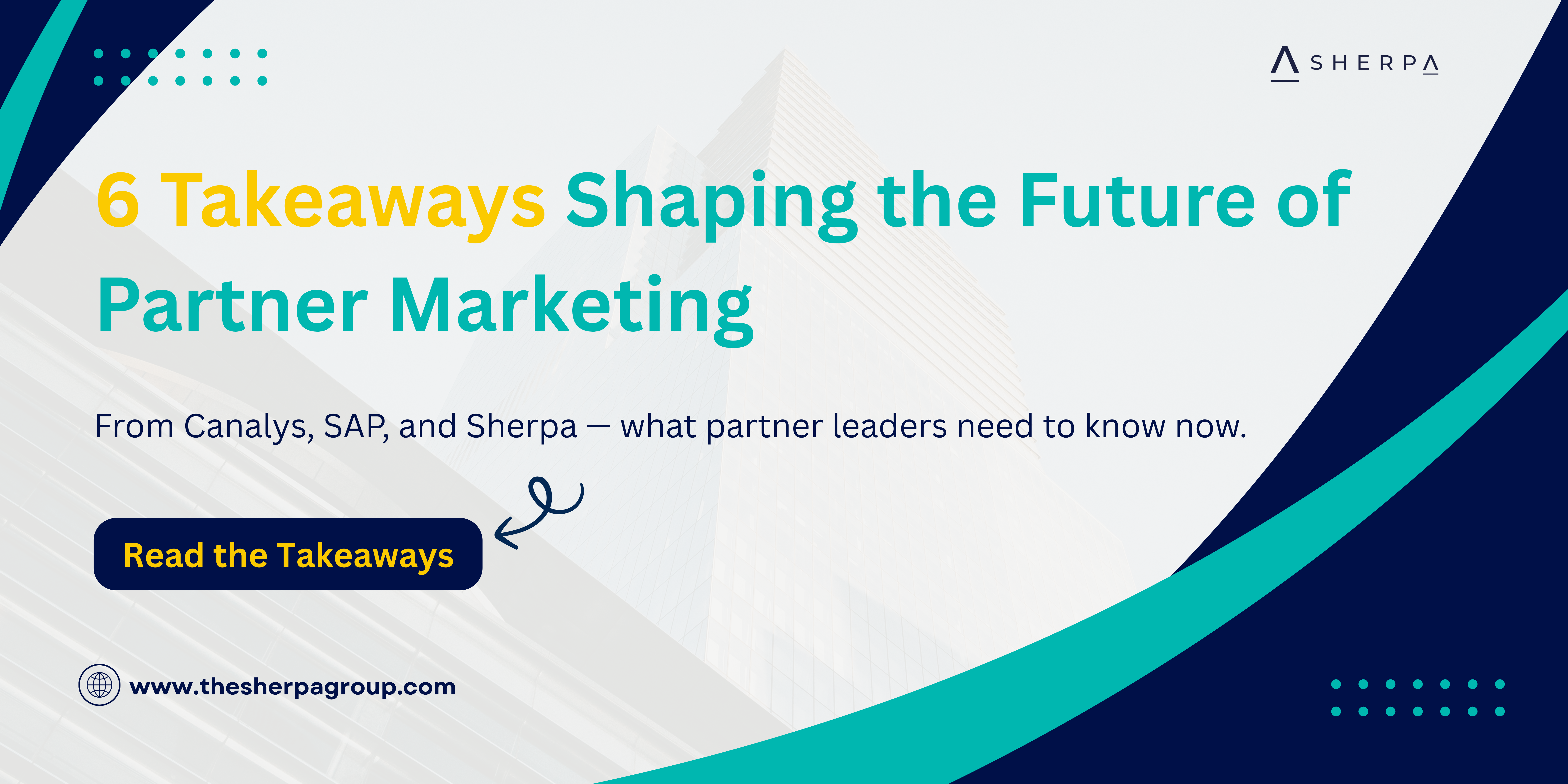
Partner marketing is entering a new era.
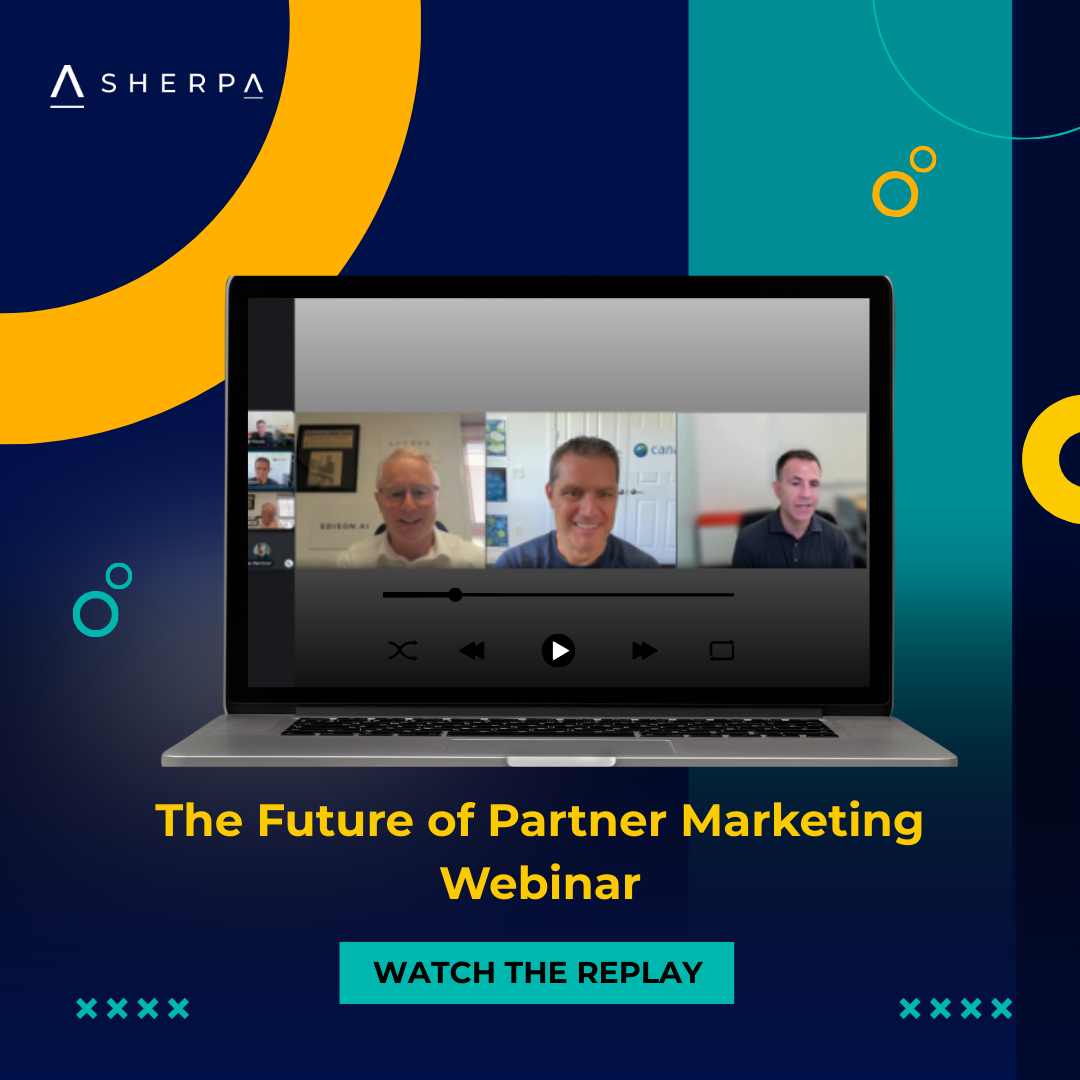
Partner marketing isn’t just evolving, it’s accelerating. With buying committees now stretching to 20+ decision-makers, AI reshaping how we work, and...
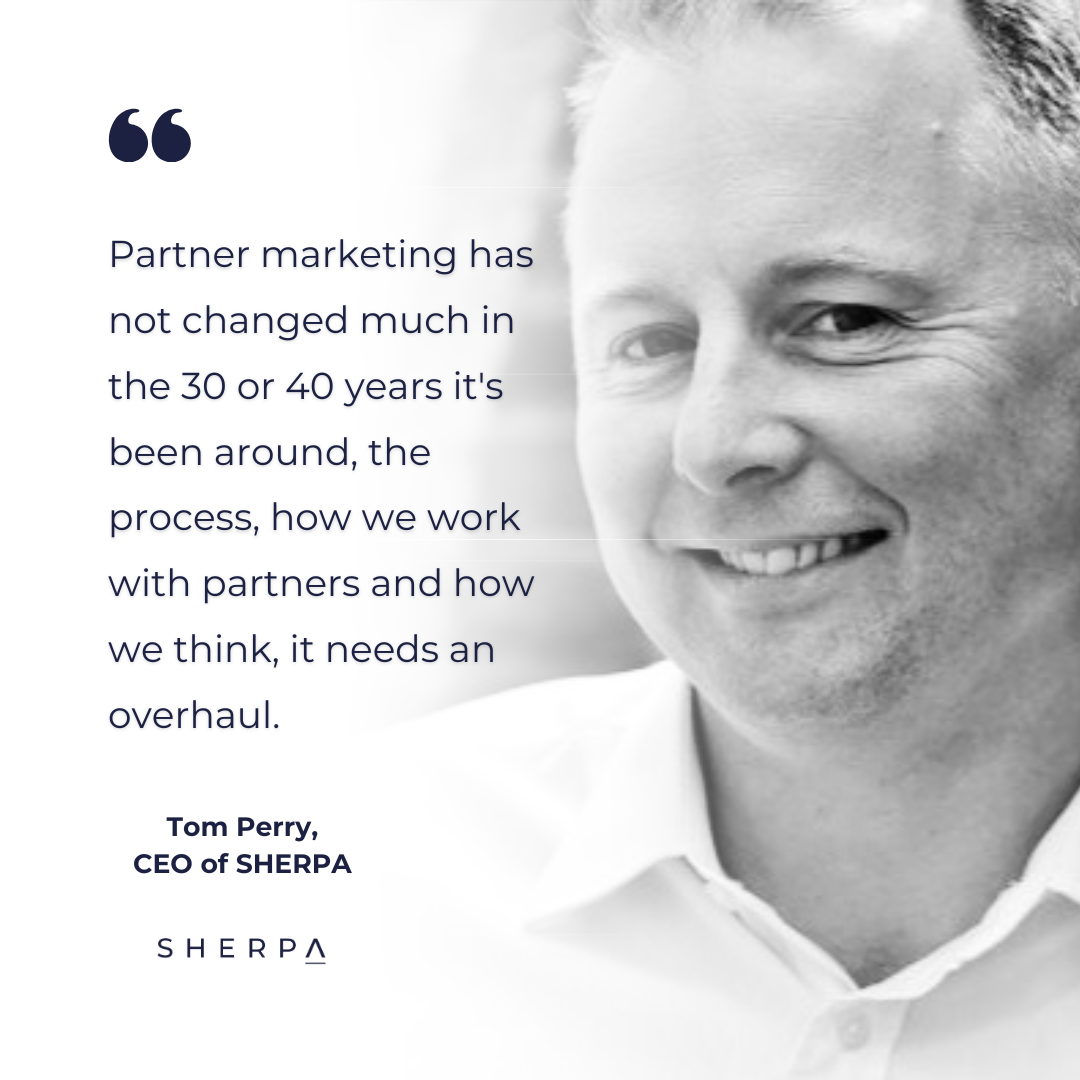
The Quest for More Partner Revenue in 2025: 10 Things to Rethink in Partner Marketing
.png)
I hear this phrase over many years that millions of dollars of MDF are left on the table each Quarter due to Partners not spending it. That really is...
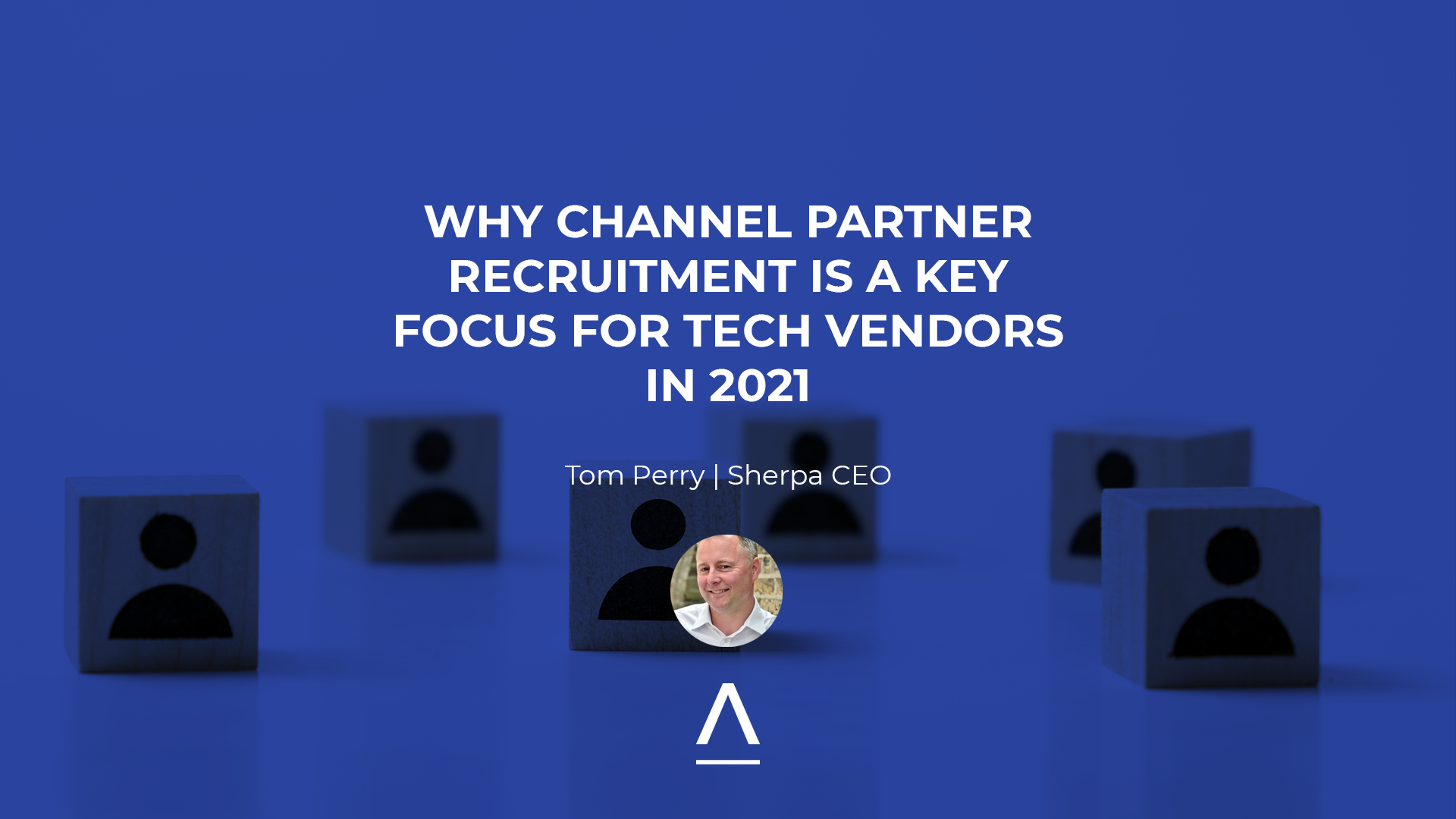
2020 shone a bright light on the technology channel and as a result of a tough year, many Vendors are concerned that their channel is not quite in...